I would like to apply a position_nudge to an object, but it should always be a certain distance (e.g. in "cm") rather than relative to the scale of the measured variable.
data <- data.frame(
name=c("de","gb","cn","ir","ru") ,
value=c(3,12,5,18,45)*1
)
ggplot(data,
aes(x=name, y=value)) +
geom_bar(stat = "identity") +
geom_text(aes(y = 0,
label = paste0(name,value)),
position = position_nudge(y = -12)) +
coord_cartesian(ylim = c(0, 50), # This focuses the x-axis on the range of interest
clip = 'off') + # This keeps the labels from disappearing
theme(plot.margin = unit(c(1,1,1,1), "lines"))
When changing the scale of the variable, that adjustment should not need to be made in the position_nudge argument, e.g.
factor = 100
data <- data.frame(
name=c("de","gb","cn","ir","ru") ,
value=c(3,12,5,18,45)*factor
)
ggplot(data,
aes(x=name, y=value)) +
geom_bar(stat = "identity") +
geom_text(aes(y = 0,
label = paste0(name,value)),
position = position_nudge(y = -12)) +
coord_cartesian(ylim = c(0, 50*factor), # This focuses the x-axis on the range of interest
clip = 'off') + # This keeps the labels from disappearing
theme(plot.margin = unit(c(1,1,1,1), "lines"))
Currently, this does not work, so that I need to manually change -12 to -1200 to achieve this:
This is of course only a short reproducible example, the actual use-case is placing country flags as x-axis labels below the plot.
The final product will look somewhat like this, but currently requires updating the nudges each time the y-values change:
Thank you very much!




